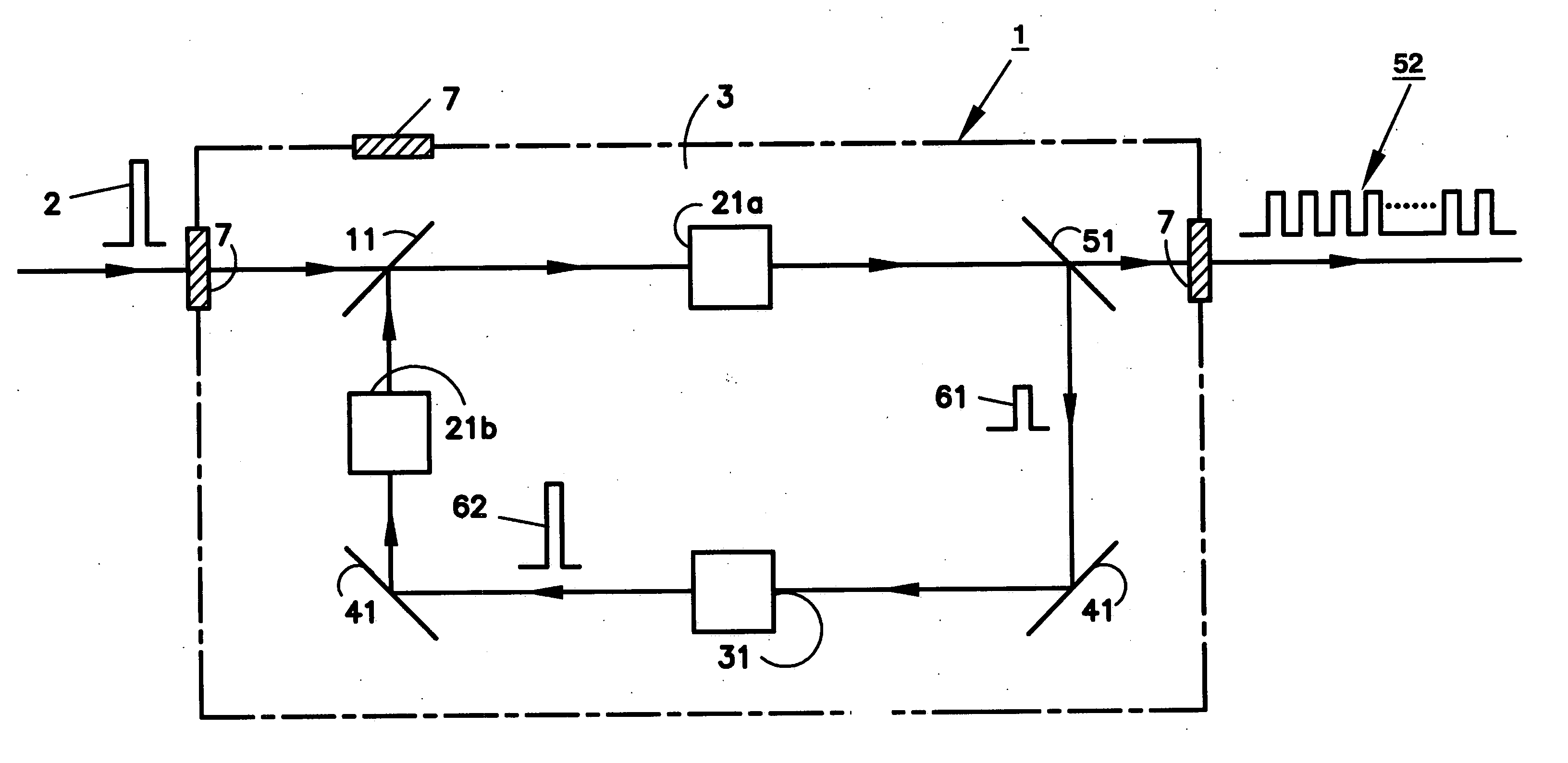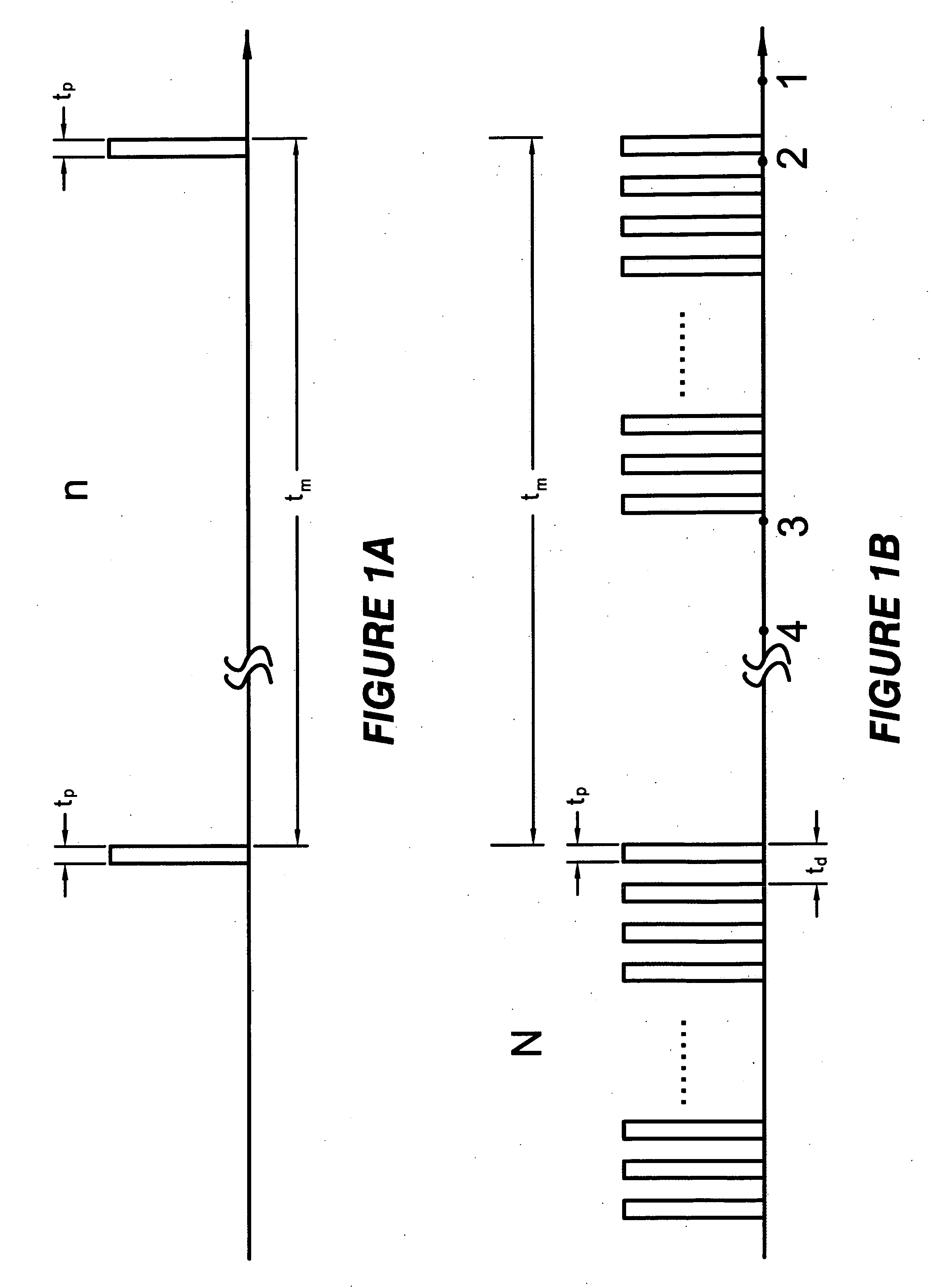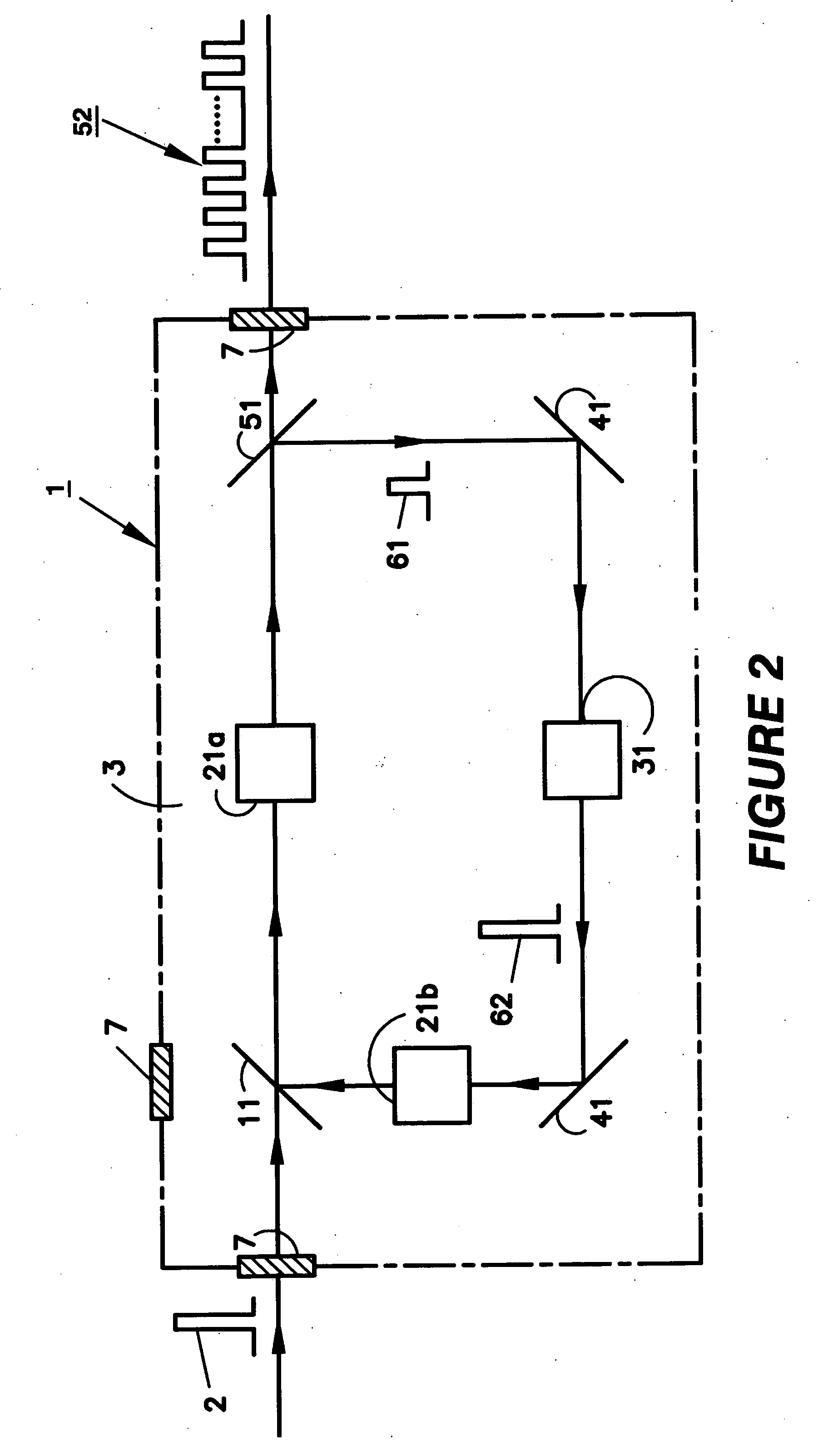Laser pulse multiplier
a laser pulse and multiplier technology, applied in the direction of electromagnetic transmission, optical resonator shape and construction, transmission, etc., can solve the problems of limiting the maximum rep rate of a laser with a milliwatt level of peak power to a few kilohertz, unnecessarily wasteing all other laser pulses between macro rf pulses, etc., to improve the electron production rate of the photoinjector and increase the number of electron bunches
- Summary
- Abstract
- Description
- Claims
- Application Information
AI Technical Summary
Benefits of technology
Problems solved by technology
Method used
Image
Examples
Embodiment Construction
[0018] The time structure of the laser pulses produced by the device in the present invention is illustrated by the following example as shown in FIGS. 1A and 1B. FIG. 1A is a schematic representation of the incoming macro pulse train, comprising a plurality of single pulses with a repetition rate of n times per second, each with a finite duration tp, versus time along the initial beam path at a location just before the first incoming pulse enters the pulse multiplier (PM) 1 of the present invention shown in FIGS. 2 and 3. The time separation between any two adjacent pulses is tm(=1 / n) seconds. FIG. 1B is a schematic representation of the output micro pulse trains along the final beam path at a location just after the pulses leave the PM 1. In this scheme, a train of N output micro laser pulses, with each pulse length tp seconds long and separated by td seconds from its nearest pulse, has the same repetition rate of n times per second as the incoming macro pulse train. If this train...
PUM
 Login to View More
Login to View More Abstract
Description
Claims
Application Information
 Login to View More
Login to View More - R&D
- Intellectual Property
- Life Sciences
- Materials
- Tech Scout
- Unparalleled Data Quality
- Higher Quality Content
- 60% Fewer Hallucinations
Browse by: Latest US Patents, China's latest patents, Technical Efficacy Thesaurus, Application Domain, Technology Topic, Popular Technical Reports.
© 2025 PatSnap. All rights reserved.Legal|Privacy policy|Modern Slavery Act Transparency Statement|Sitemap|About US| Contact US: help@patsnap.com



